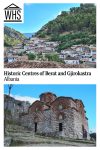Historic Centres of Berat and Gjirokastra
By Rachel Heller
What are the Historic Centers of Berat and Gjirokastra?
Berat and Gjirokastra are two towns in southern Albania whose old centers both contain buildings dating to the Ottoman period, where the traditions of Islam coexisted with earlier Byzantine influences.
In Berat, a hilltop citadel encircles several 13th-century churches and 15th-century (Ottoman-era) mosques. Outside the citadel, houses from the 18th and 19th centuries follow a “vernacular housing tradition,” according to UNESCO, in tiered horizontal rows.
Disclosure: This article contains affiliate links. Making a purchase through an affiliate link will mean a small commission for this website. This will not affect your price.
Gjirokastra’s historic center also includes a fortress, but in this case the highlights are the landowners’ houses from the 17th century. They have turrets in the Turkish style – again showing Ottoman influence.
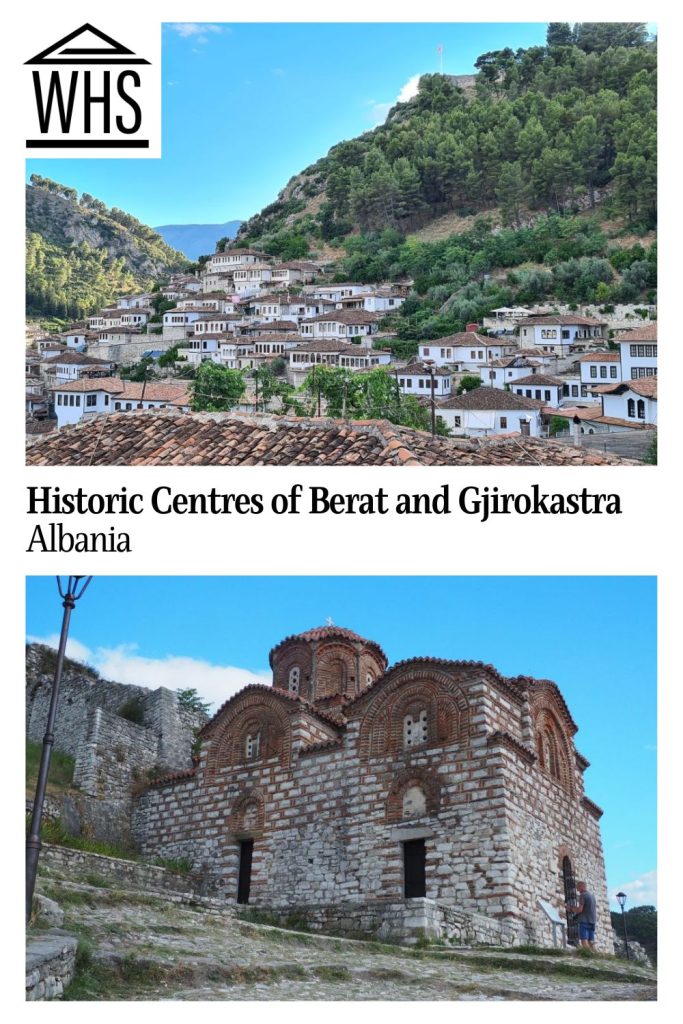
Why are Berat and Gjirokastra UNESCO World Heritage sites?
According to UNESCO, the two towns “bear outstanding testimony to the diversity of urban societies in the Balkans, and to longstanding ways of life which have today almost vanished.” At the same time, they demonstrate “various types of monument and vernacular urban housing during the Classical Ottoman period, in continuity with the various Medieval cultures which preceded it, and in a state of peaceful coexistence with a large Christian minority, particularly at Berat.” In other words, it’s not just about the Ottoman-era buildings, but also about the traditions surrounding those buildings.
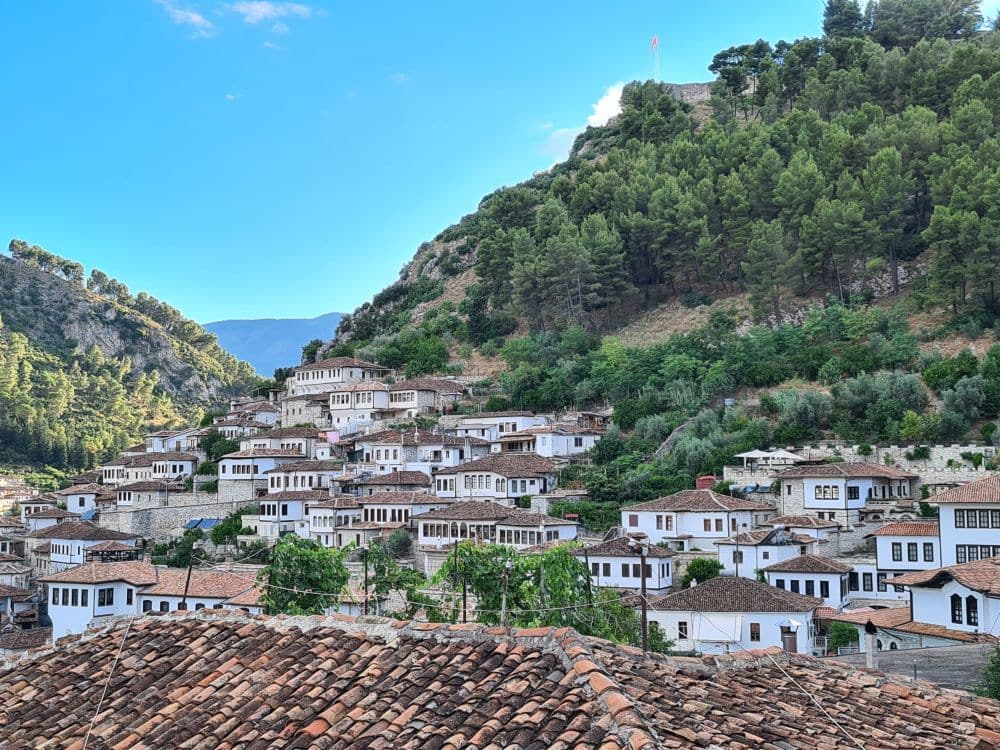
What can you expect on a visit to Berat and Gjirokastra?
Gjirokastra
The Castle in Gjirokastra, at the top of a hill, affords great views over the city and the mountains beyond. The castle is a kilometer long, with a clock tower at one end and a long hallway containing large cannons. Inside is a weapons museum, and outside, oddly, is a Lockheed T-33 airplane that in 1958, depending on which story you believe, either made an emergency landing in Albania or was a spy plane intercepted by the Albanian People’s Army.
In the old part of town below the castle, you’ll find a few pleasant cobblestone shopping streets. Strolling around, you’ll notice a few very large houses which are the landowners’ houses from the 17th century or later that are mentioned in the UNESCO listing. These houses are unusual in that, originally, the families that inhabited them painted the outside – a few remnants remain here and there. The eaves extend so far from the roofs of these houses that they are supported by extending wooden struts: a very distinctive local design.
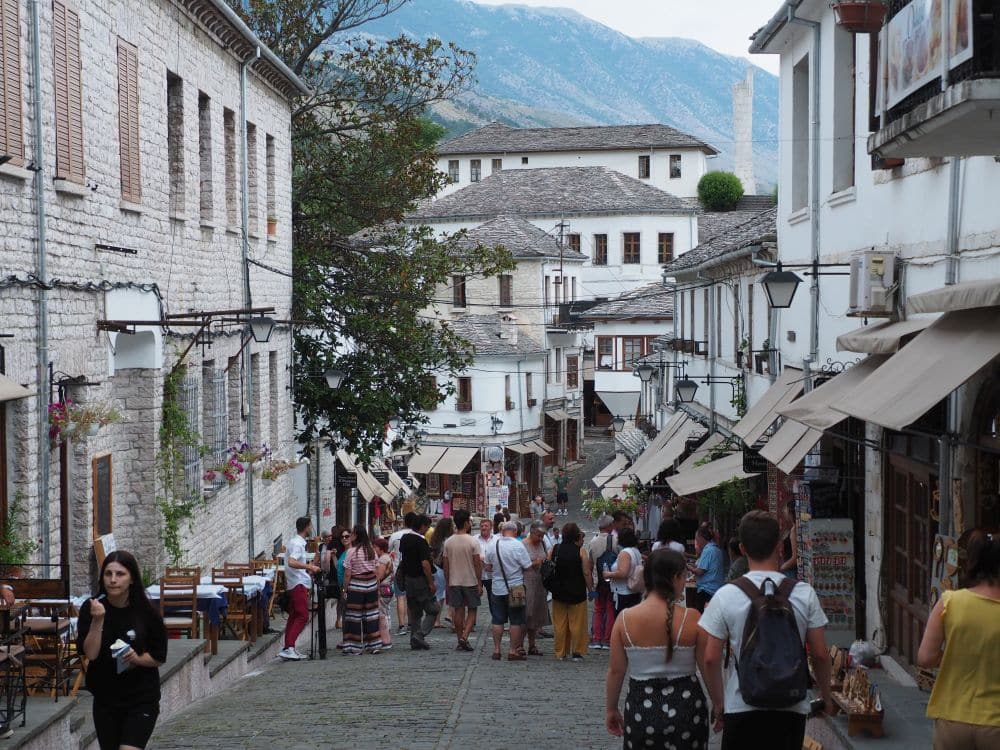
Berat
Berat’s modern center is in a valley. The old center is on two hills above the modern center, divided in two by a river. The two sides are connected by an arched bridge. A large fortress sits above one half of the old town: the Castle of Berat. This makes for some very picturesque views of the low white houses – also part of the UNESCO site – seemingly piled up on the side of the hill.
The Castle of Berat was a delightful surprise for us. We expected a castle much like that in Gjirokastra, but it’s really more of a fortification with a town inside it. There are stone streets and stone buildings and several Byzantine-era churches. These have frescoes inside, and, while they show quite a bit of damage, parts of some of them – particularly the Church of St. Mary Blaherna – are still beautifully clear with colorful paintings of saints and religious scenes.
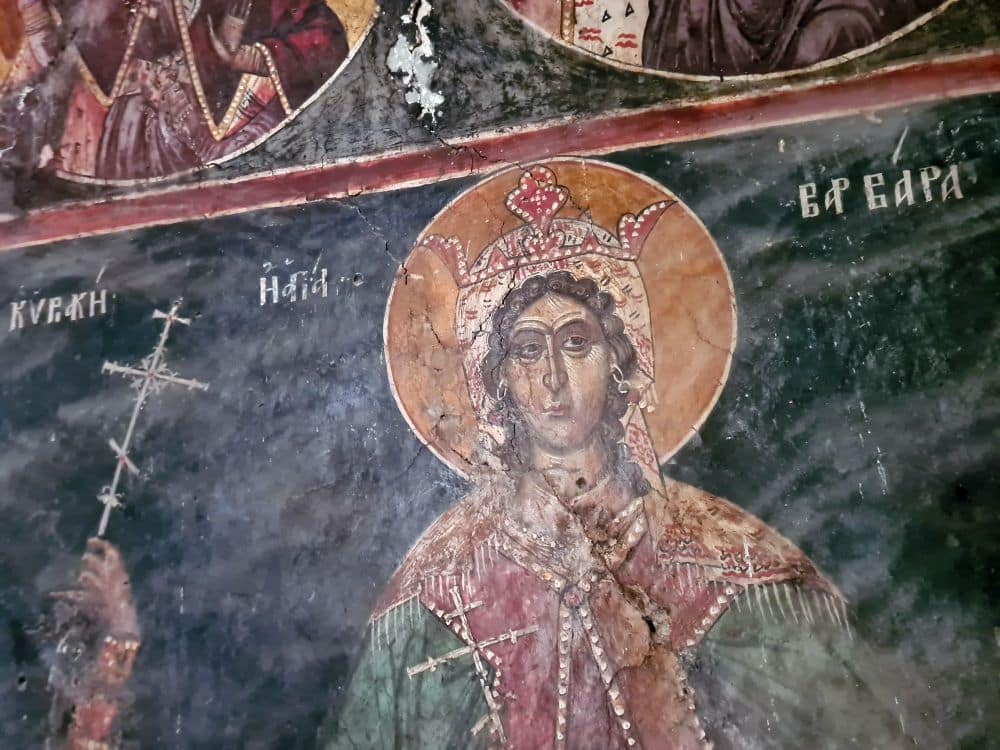
Are Gjirokastra and Berat worth visiting?
Certainly, if you’re traveling in Albania, you should stop at at least one of these towns. Choose Berat if you like Byzantine-era frescoes in particular. Choose Gjirokastra if you’d enjoy a small-town atmosphere and pretty views.
What sorts of travelers would like Berat and Gjirokastra?
Anyone who likes to explore a less-visited historical site would enjoy these towns, though Gjirokastra’s shopping streets are a bit touristy. They’re also in an area of Albania with breathtaking mountainous terrain, a great place for anyone who likes hiking. These are definitely not good places to visit for anyone who is mobility-impaired, since the streets are very bumpy with large cobblestones.
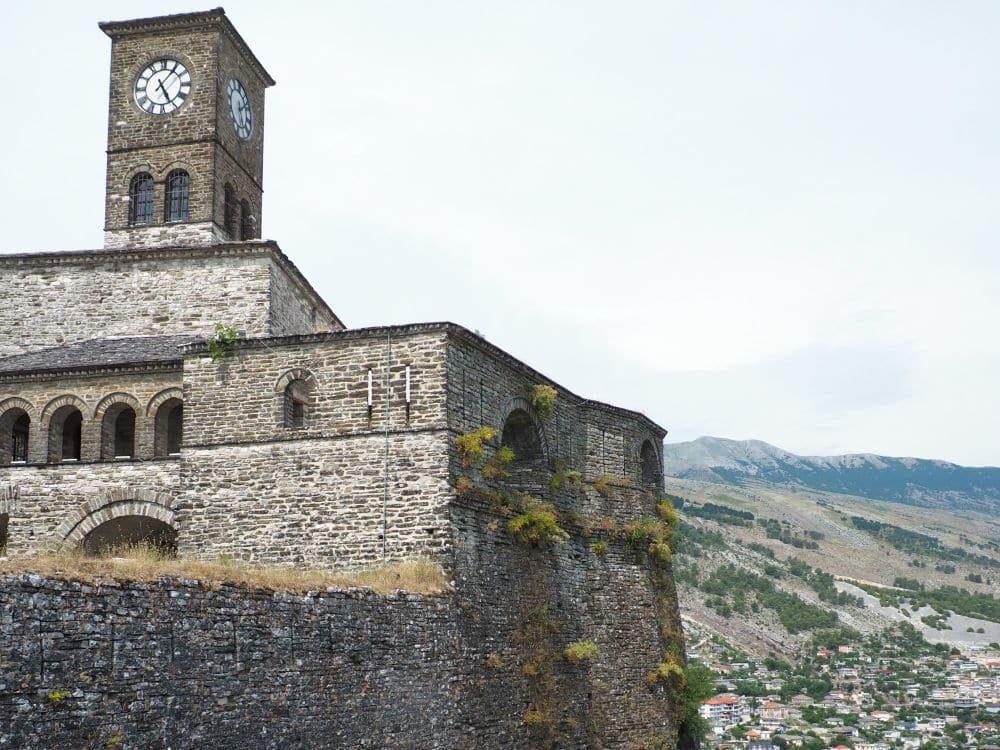
Tips for visiting Berat and Gjirokastra
I have many tips for visiting Albania. Here are the ones that particularly apply to these two towns:
Driving
If you are driving, do NOT try the direct drive between Gjirokastra and Berat, which involves the SH75 and SH 74. Unless you have a high-clearance SUV and a lot of time and driving skill, just don’t do it. While SH75 is fine, SH74 is not! The road is loose gravel and stone, clearly unmaintained, with sides that are collapsing down hills. We saw one stone bridge over a ravine that had partially collapsed, making it half of its original width. To avoid crossing it, vehicles had simply gouged out a different track around the ravine – a deeply-rutted mess.
I don’t know how much of SH74 is this bad because after several kilometers at a snail’s pace, we gave up, turned around and took a different – and longer – route: all of it paved. This involves the SH4/E853 all the way to the city of Fier, then the SH73 back down to Berat. Choose that!
If you’re going to be exploring the south of Albania or crossing into Greece, there’s another UNESCO site right near the border (on the Albanian side) that is practically unknown and worth a stop: Butrint.
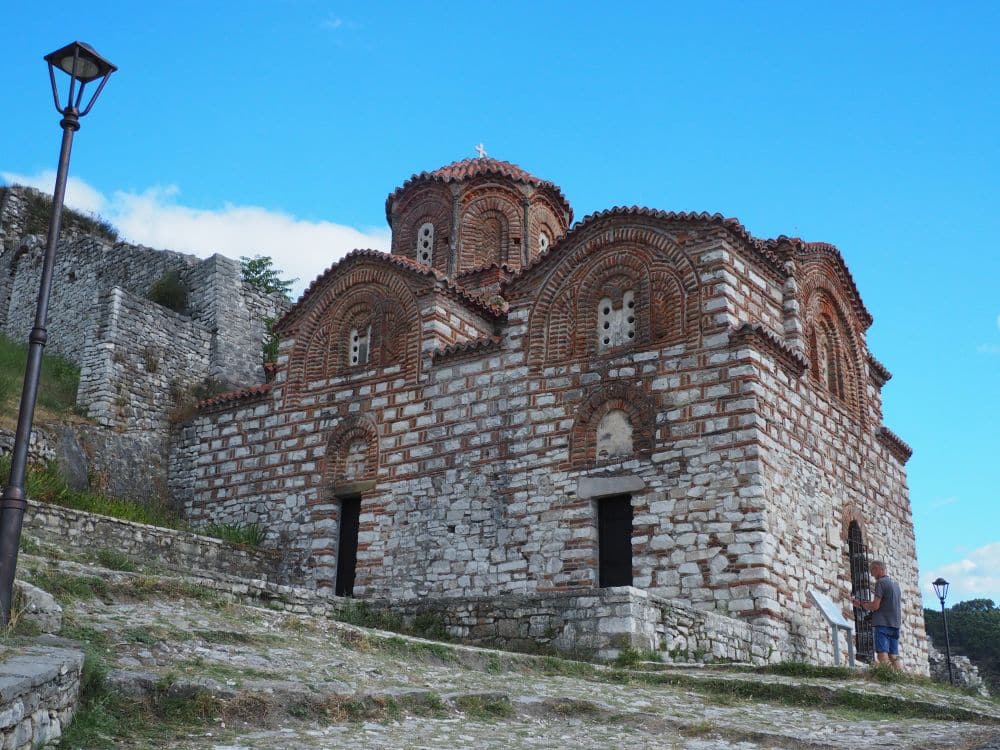
Berat
Be very careful walking here. Some “roads” are mere paths and many of them, we found, are in very bad condition: rocky, narrow and sometimes steep. If you can, ask in the castle for Tony. He lives there and so did his parents and grandparents. He has the keys to several of the Byzantine churches and can let you in to see the frescoes. If you can only see one, make it the Church of St. Mary Blaherna.
You could also take this walking tour or this one, both of which are group tours with a certified tour guide. I can’t be sure, but I don’t think either includes entrance to the churches where the frescoes are.
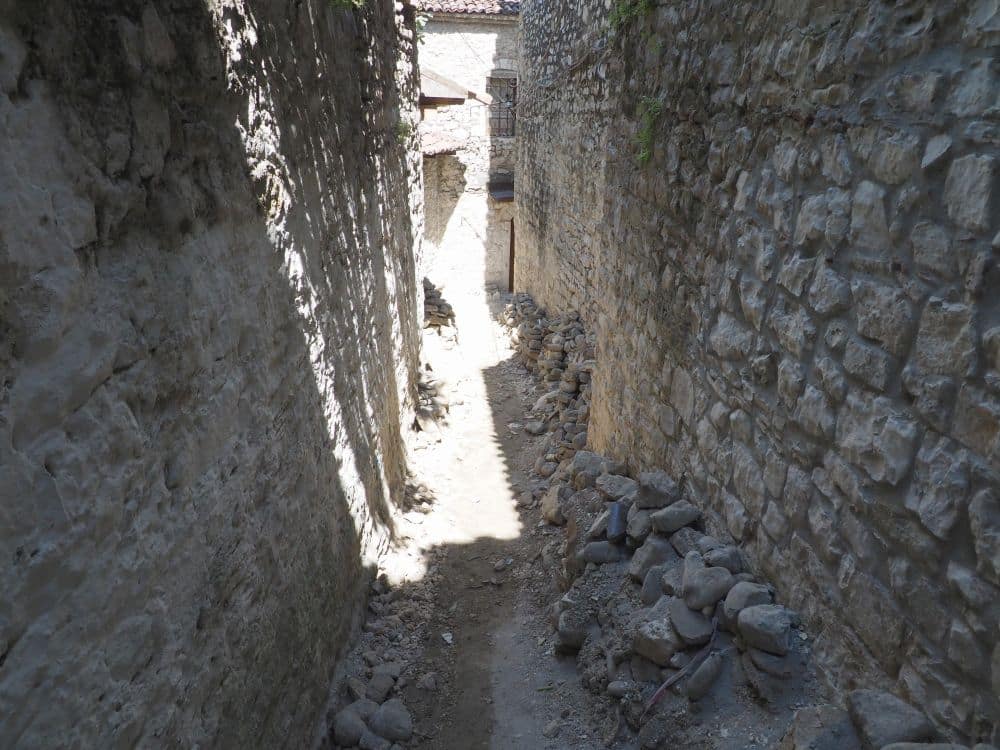
Gjirokastra
There are maps posted around the old town showing the locations of the historical houses that are worth seeing. However, we discovered that the maps are not accurate, with the houses marked differently on different maps! The QR codes on the maps, however, do give information about the houses.
Make sure to visit Skënduli House, which offers tours of the inside. The family that owns it lived there until the early 1980s, and it is unchanged since then. It gives a clear idea of how extended families used these spaces: the ground floor for work and farming, upper rooms for daily life, and a room reserved just for weddings.
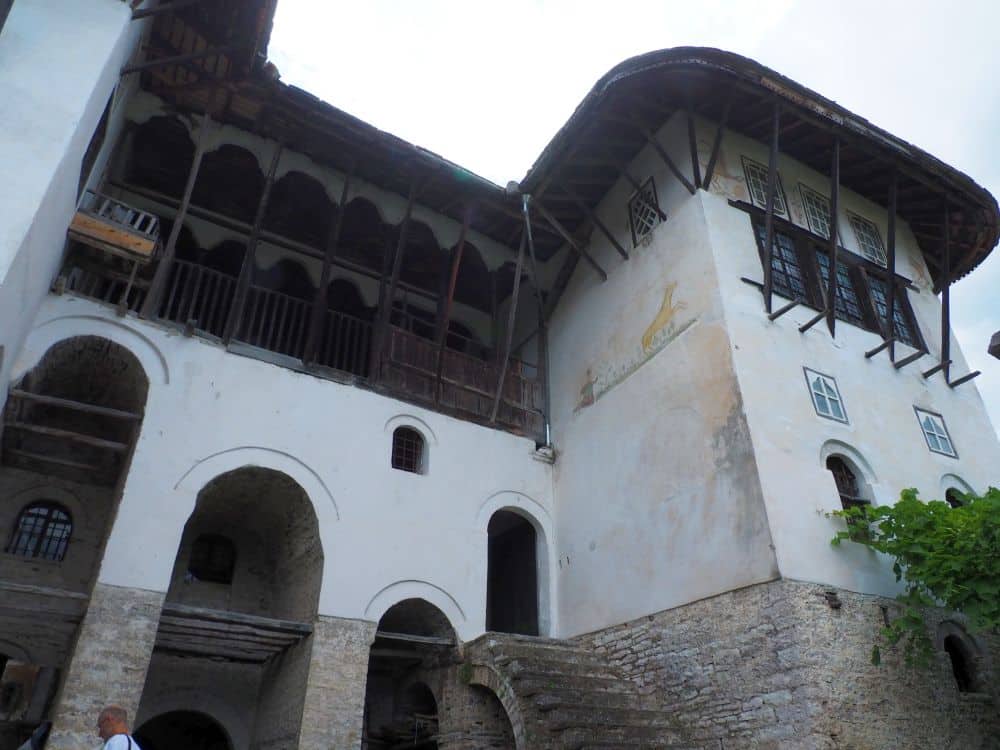
You’ll see advertisements for a Cold War tunnel just outside the old city. Unless the Cold War is of particular interest to you, it probably isn’t worth your time or money. There’s not much to see but heavy doors, dank and cold tunnels, and a few rooms that were used as the Communist Party head’s office and the mayor’s office.
Where are Gjirokastra and Berat?
Gjirokastra is 3.5 hours from the capital of Tirana by car. It’s about a half-hour from the Greek border crossing at Kakavijë and an hour – because there’s no direct route – from the seaside town of Sarandë.
Berat is about two hours from Tirana or about three hours from Sarandë.
If you don’t want to drive in Albania, take this day trip from Tirana or this day trip from Sarandë. Both only go to Berat, not Gjirokastra.
Both towns are also reachable by bus from Tirana, which will take a bit longer than by car.
For more information, visit the Berat tourism website or the Gjirokastra tourism website.
Have you been to Gjirokastra and/or Berat? If so, do you have any additional information or advice about this UNESCO World Heritage site? Please add your comments below!

